Planning Your First Ski Holiday: Topflight’s Complete Beginner Guide
Your ultimate guide to stress-free ski trip planning
Your first ski holiday is an exciting milestone that promises unforgettable memories, breathtaking mountain views, and the exhilaration of gliding down snow-covered slopes. However, without proper planning, even the most anticipated ski trip can become overwhelming, expensive, or disappointing.
Many first-time skiers make common mistakes that could easily be avoided with the right preparation. From arriving at the resort without proper gear to missing out on essential ski lessons, or worse, forgetting crucial travel insurance, these oversights can turn your dream holiday into a stressful nightmare.
That's where Topflight’s comprehensive first ski holiday checklist comes in. This guide will walk you through every essential aspect of planning your ski trip, ensuring you're well-prepared for a fantastic mountain adventure. From a romantic getaway, family holiday, or trip with friends, following this ski trip checklist will help you avoid common pitfalls and make the most of your time on the slopes.
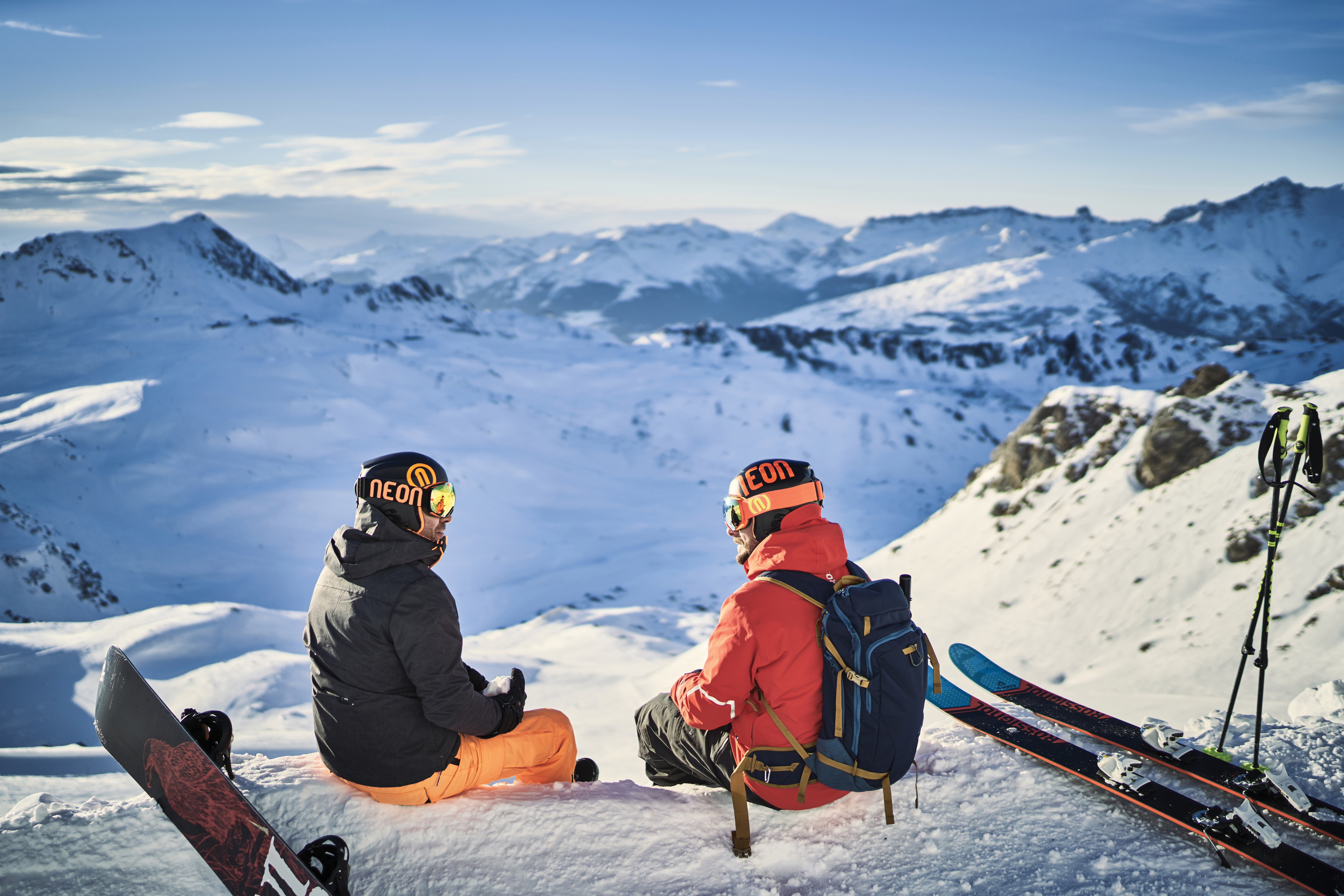
1. Ski holiday checklist overview
Before diving into the details, here's your quick-glance ski holiday checklist covering all the essentials:
Essential Planning Categories
| Category | Key Items | Timeline |
|---|---|---|
| Destination & Accommodation | Resort selection, booking confirmation, room preferences | 6+ months ahead |
| Travel Documents | Passport, travel insurance, flight tickets, transfers | 2-3 months ahead |
| Ski Equipment | Skis, boots, helmet, clothing layers, goggles | 1-2 months ahead |
| Lessons & Lift Passes | Ski school booking, lift pass purchase, equipment hire | 2-4 weeks ahead |
| Health & Safety | First aid kit, sunscreen, mountain safety knowledge | 1-2 weeks ahead |
| On-Mountain Essentials | Water bottle, snacks, piste map, ski apps | Day before travel |
This ski checklist overview ensures you won't forget any crucial elements when planning your mountain adventure.
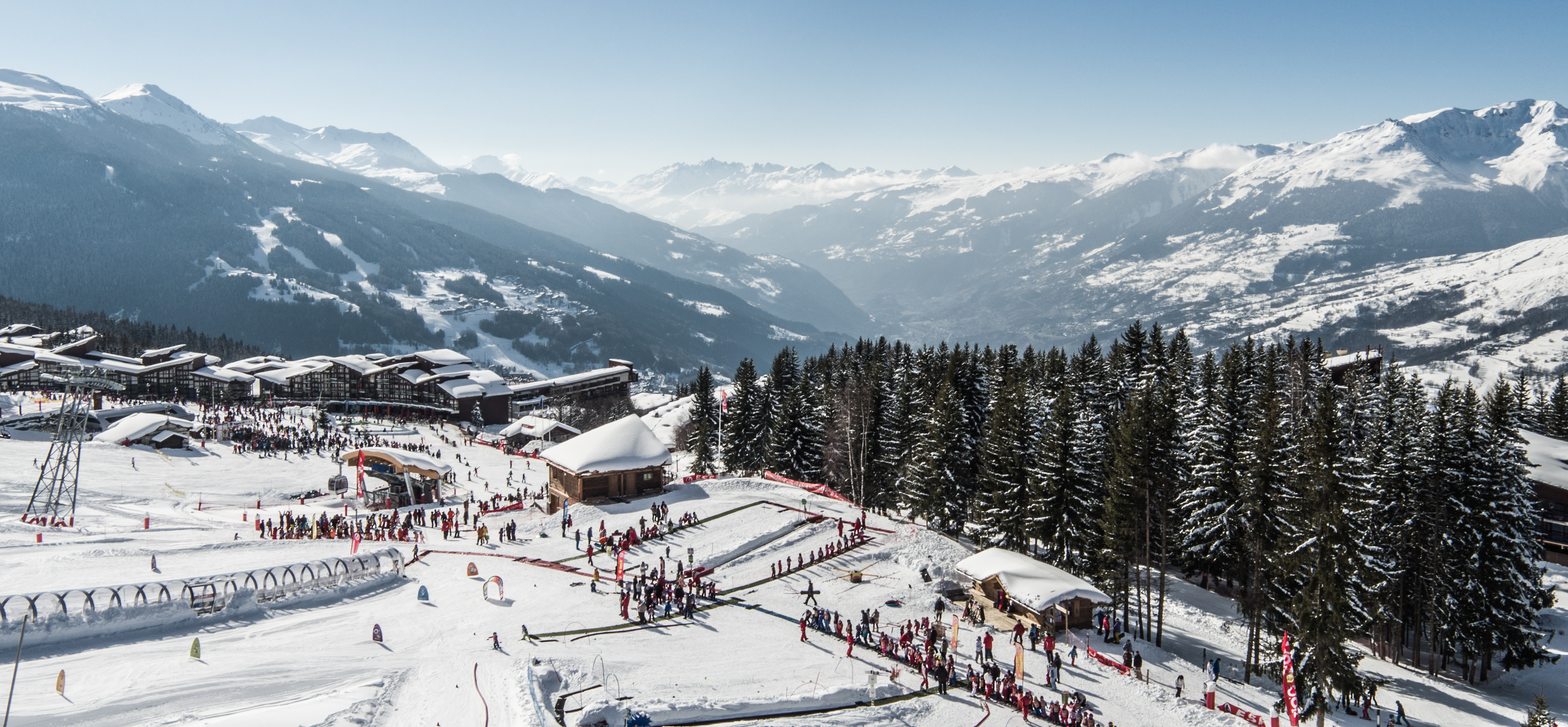
2. Choosing your destination and resort
Selecting the right destination is the foundation of your first ski holiday checklist. The resort you choose will significantly impact your experience, budget, and enjoyment level.
Beginner-Friendly Resort Features
When choosing your destination, look for resorts that offer:
Gentle Learning Slopes: Resorts with extensive beginner areas and wide, gentle runs are ideal for first-timers. Avoid destinations known primarily for challenging terrain or off-piste skiing.
Quality Ski Schools: Look for resorts with excellent ski instruction programs, preferably with English-speaking instructors if that's your preference.
Village Accessibility: Choose resorts where accommodation is close to ski lifts and village amenities, reducing the need for complicated transfers.
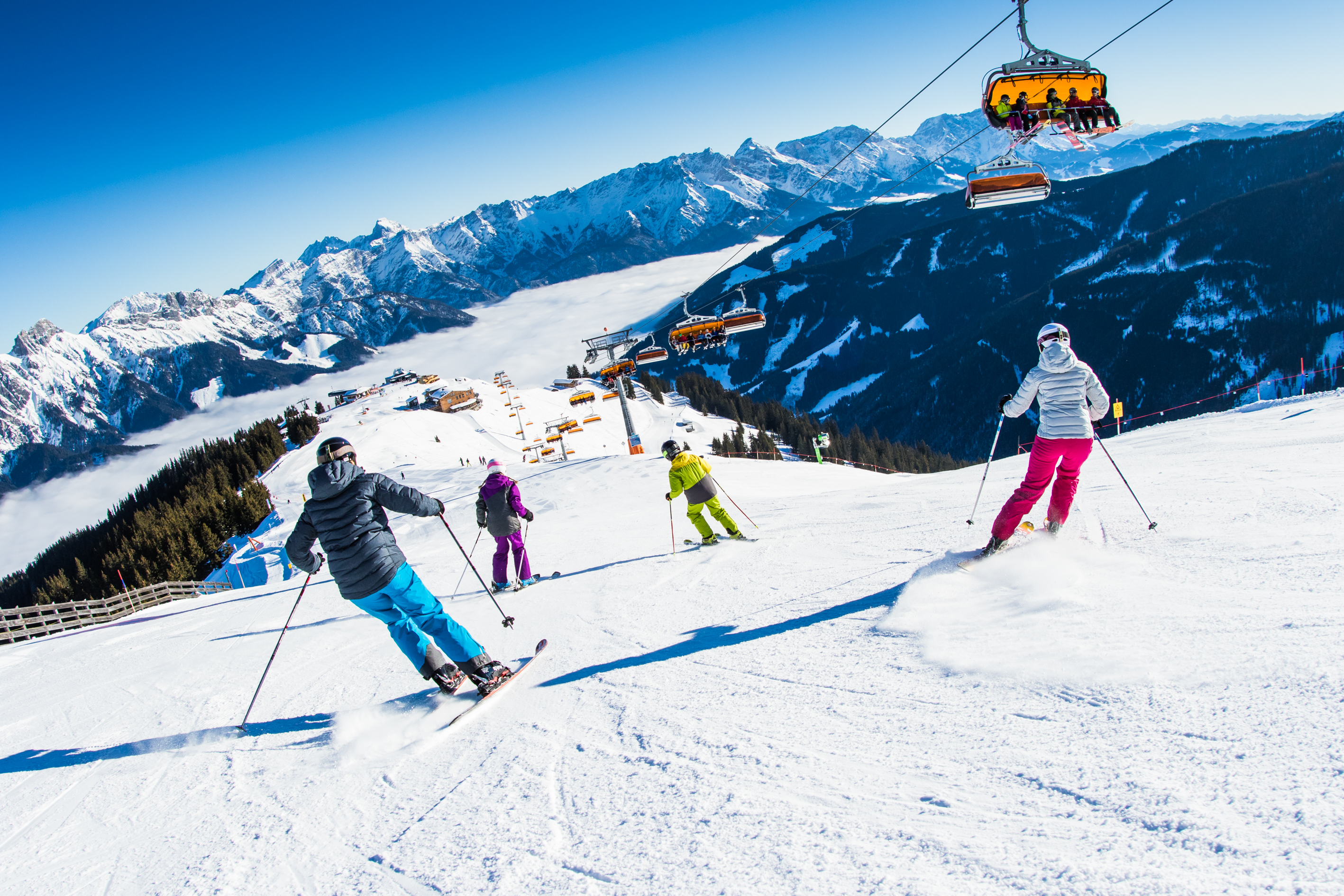
Key Ski Resort Selection Factors
Consider these factors when adding resort selection to your ski trip checklist:
Slope variety: Ensure at least 30% of runs are beginner-friendly
Après-ski options: From quiet mountain huts to lively bars
Family facilities: If travelling with children, look for ski kindergartens and family-friendly accommodation
Budget considerations: Some destinations offer significantly better value than others
Transfer accessibility: Consider journey time from airports to the resort

Top Beginner Destinations by Country
Austria offers charm and tradition with resorts like Söll, Saalbach, and St. Johann in Tirol providing excellent beginner facilities, beautiful alpine villages, and world-renowned hospitality. Austrian resorts typically offer great value for money and have a relaxed, family-friendly atmosphere.
Discover Topflight’s ski resort holidays in Austria.
France provides variety and extensive ski areas. Resorts like La Plagne and Méribel Valley offer purpose-built facilities with ski-in, ski-out accommodation and comprehensive beginner programs. French resorts often have modern lift systems and excellent mountain restaurants.
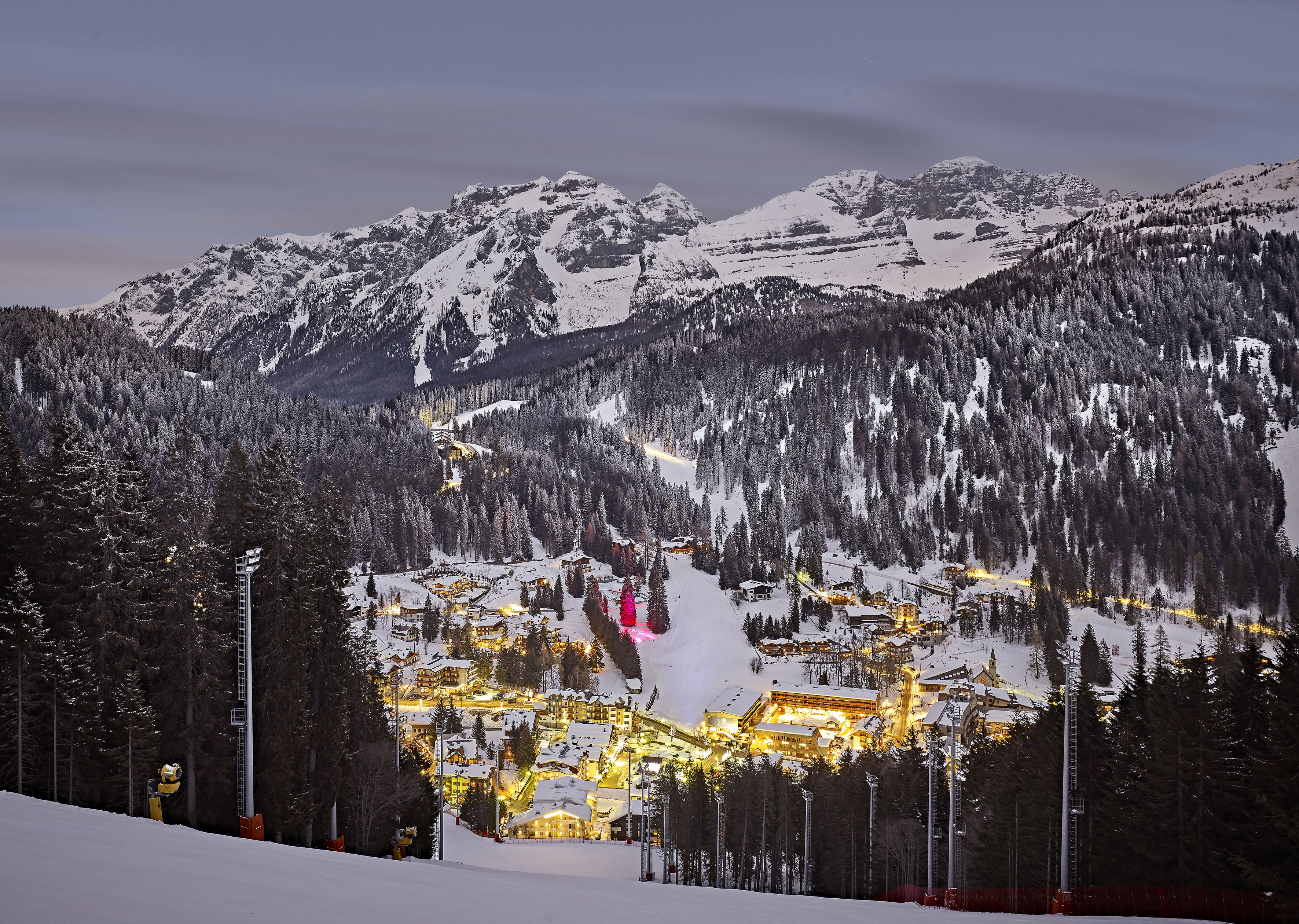
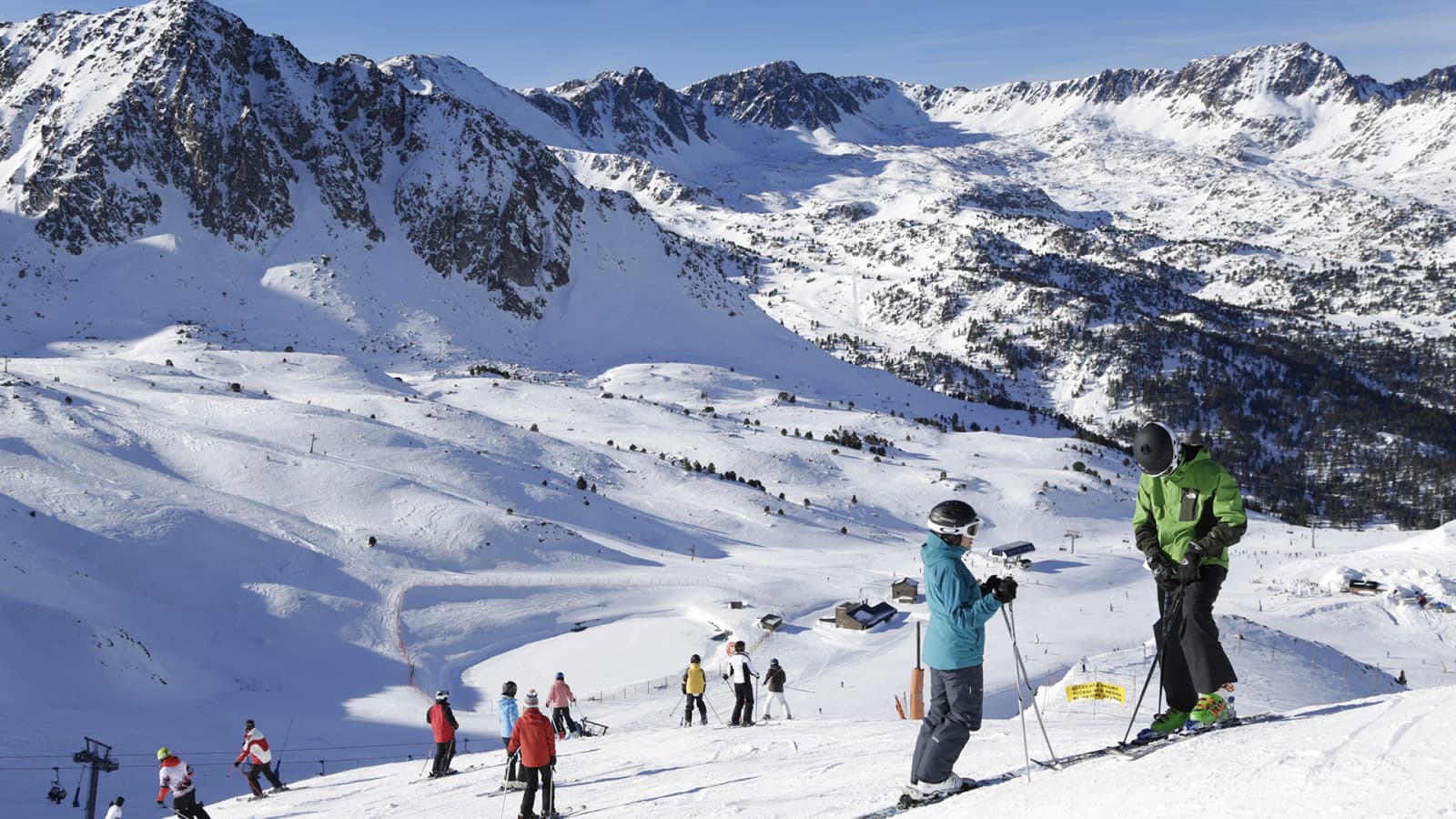
Italy combines skiing with exceptional cuisine and culture. In particular, Livigno is a favourite for its high-altitude slopes, reliable snow conditions, and duty-free shopping. The resort offers a relaxed, friendly atmosphere alongside excellent dining and après-ski, making it a superb choice for beginners looking for something a little different from the busier Alpine resorts.
Discover Topflight’s ski resort holidays in Italy.
Andorra offers excellent value for money and a warm, welcoming atmosphere, making it a great choice for first-time skiers. Resorts such as Arinsal & Pal are particularly popular with beginners and families, thanks to their friendly ski schools and gentle slopes.
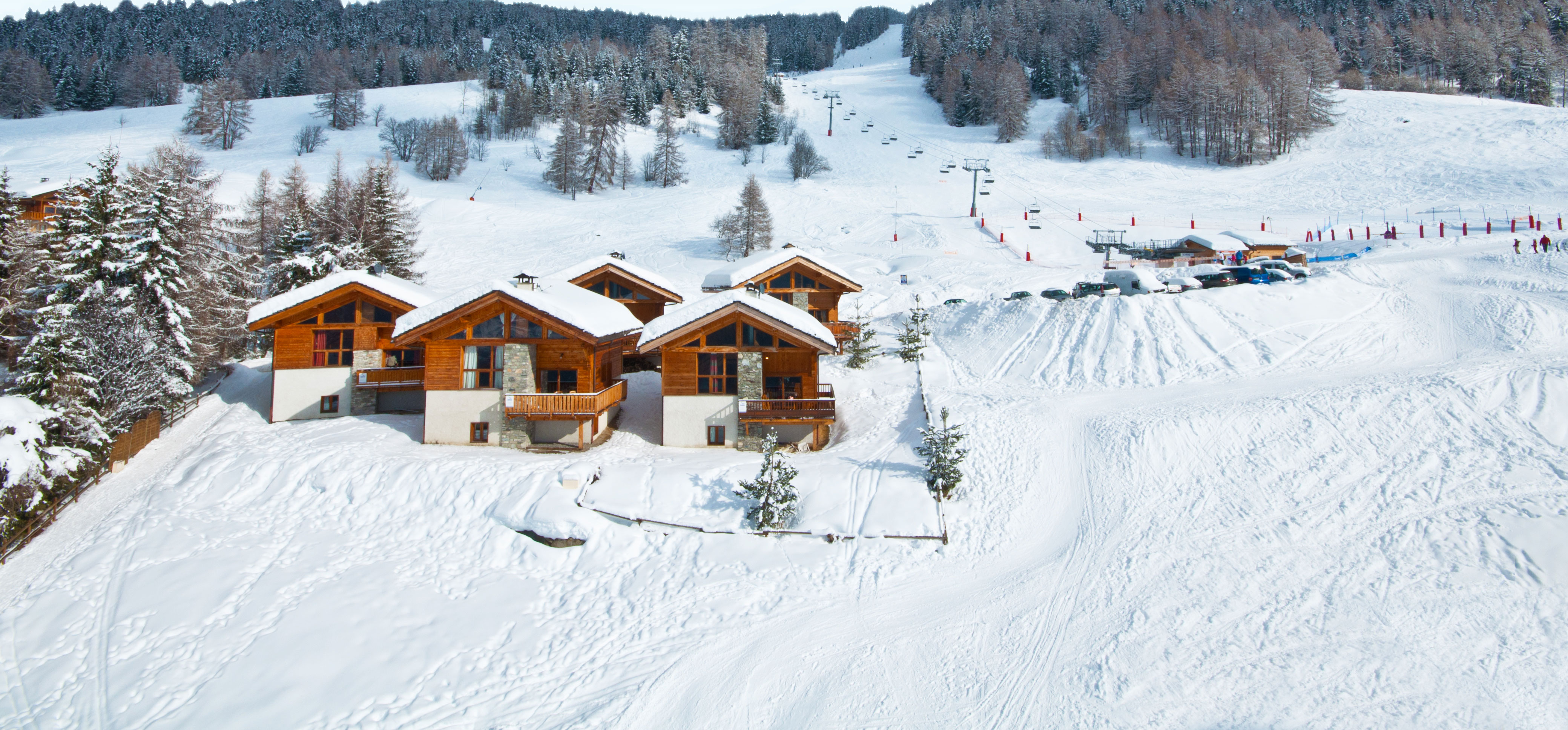
3. Accommodation types explained
Understanding your accommodation options is a crucial part of your ski holiday checklist. The right choice can enhance your entire experience, while the wrong one might leave you feeling disconnected from the action.
Ski Hotel Accommodation
Ski Hotels offer the most straightforward option for beginners. Benefits include daily housekeeping, on-site restaurants, and often ski equipment storage. Many ski hotels provide half-board options (breakfast and dinner included), which can be excellent value and convenient after tiring days on the slopes.
Pros: No meal planning, professional service, social atmosphere
Cons: Less flexibility, can be more expensive, fixed meal times
Chalet Accommodation
Catered Chalets provide a home-away-from-home experience with the luxury of having meals prepared for you. You'll typically share the chalet with other guests, creating a social atmosphere perfect for first-time skiers looking to meet like-minded people.
Self-Catered Chalets offer complete independence and are ideal for families or groups wanting flexibility in meal times and food choices.
Pros: Cosy atmosphere, often ski-in/ski-out, good value for groups
Cons: Shared facilities (catered), need to shop and cook (self-catered)

Apartment Accommodation
Self-Catered Apartments provide maximum flexibility and can offer excellent value, especially for longer stays or larger groups. Many come with kitchen facilities, separate bedrooms, and living areas.
Pros: Complete independence, cost-effective for groups, home comforts
Cons: No meal service, need to handle cleaning and shopping
What Beginner Skiers Usually Prefer
Most first-time skiers benefit from catered accommodation (hotels or catered chalets) because it eliminates meal planning and grocery shopping, allowing you to focus entirely on learning to ski and enjoying your holiday.
Topflight offers a range of different accommodation options for you to choose from when booking your ski holiday for the first time. Check out all of our options for Austria, France, Italy and Andorra.
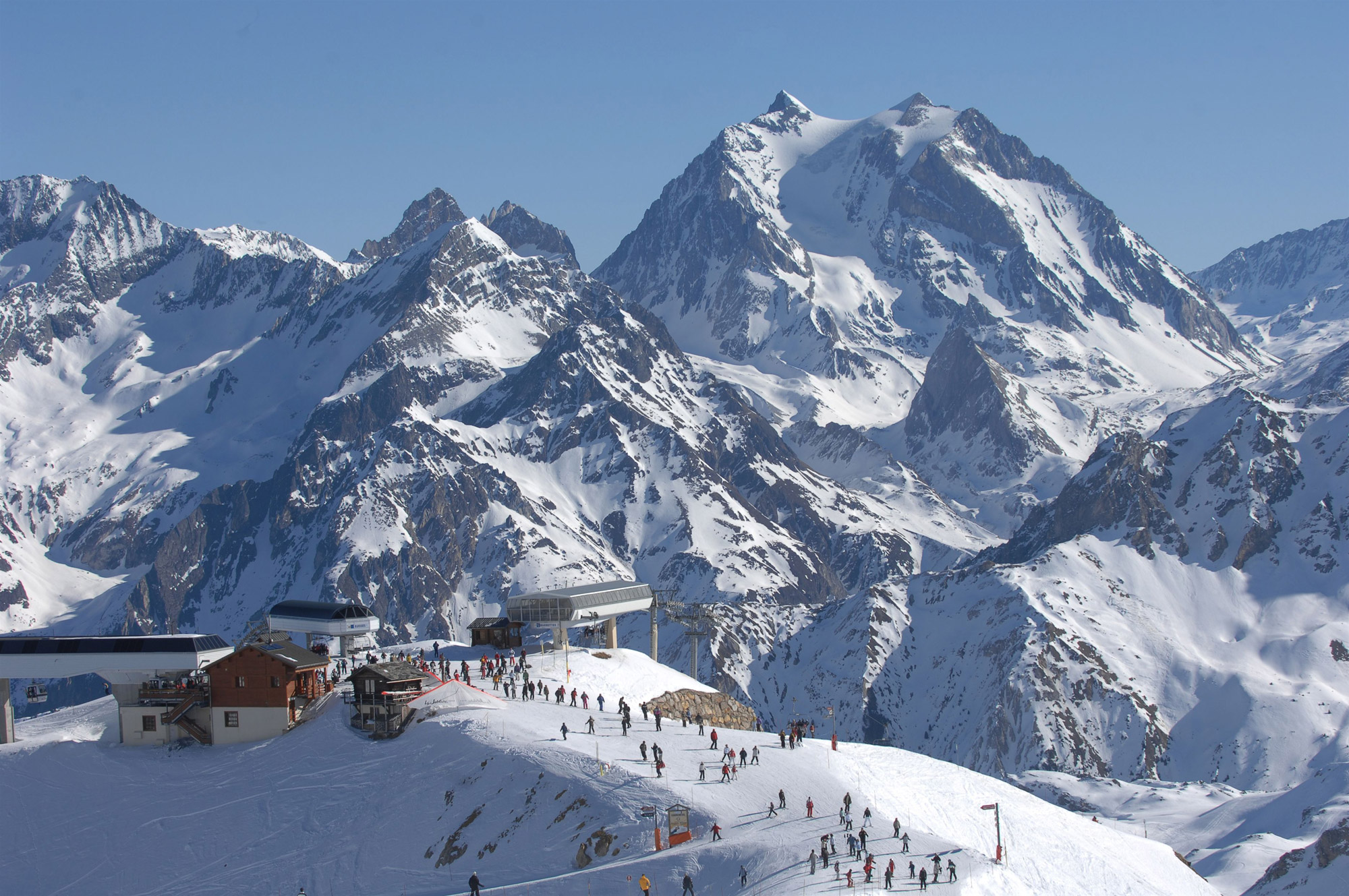

4. Essential ski travel documents and insurance
No first ski holiday checklist is complete without making sure you have the right documentation and protection in place.
Passport and Visa Requirements
European Destinations: UK and Irish travellers require a valid passport with at least three months’ remaining validity. For most European ski holidays, no visa is required for stays under 90 days. Always double-check that your passport is up to date before travelling.
Worldwide Destinations: For long-haul ski trips, such as to Japan, Canada or the USA, you may need a visa or electronic travel authorisation (e.g. ESTA for the US or eTA for Canada). These should be applied well in advance, as processing can take several weeks.
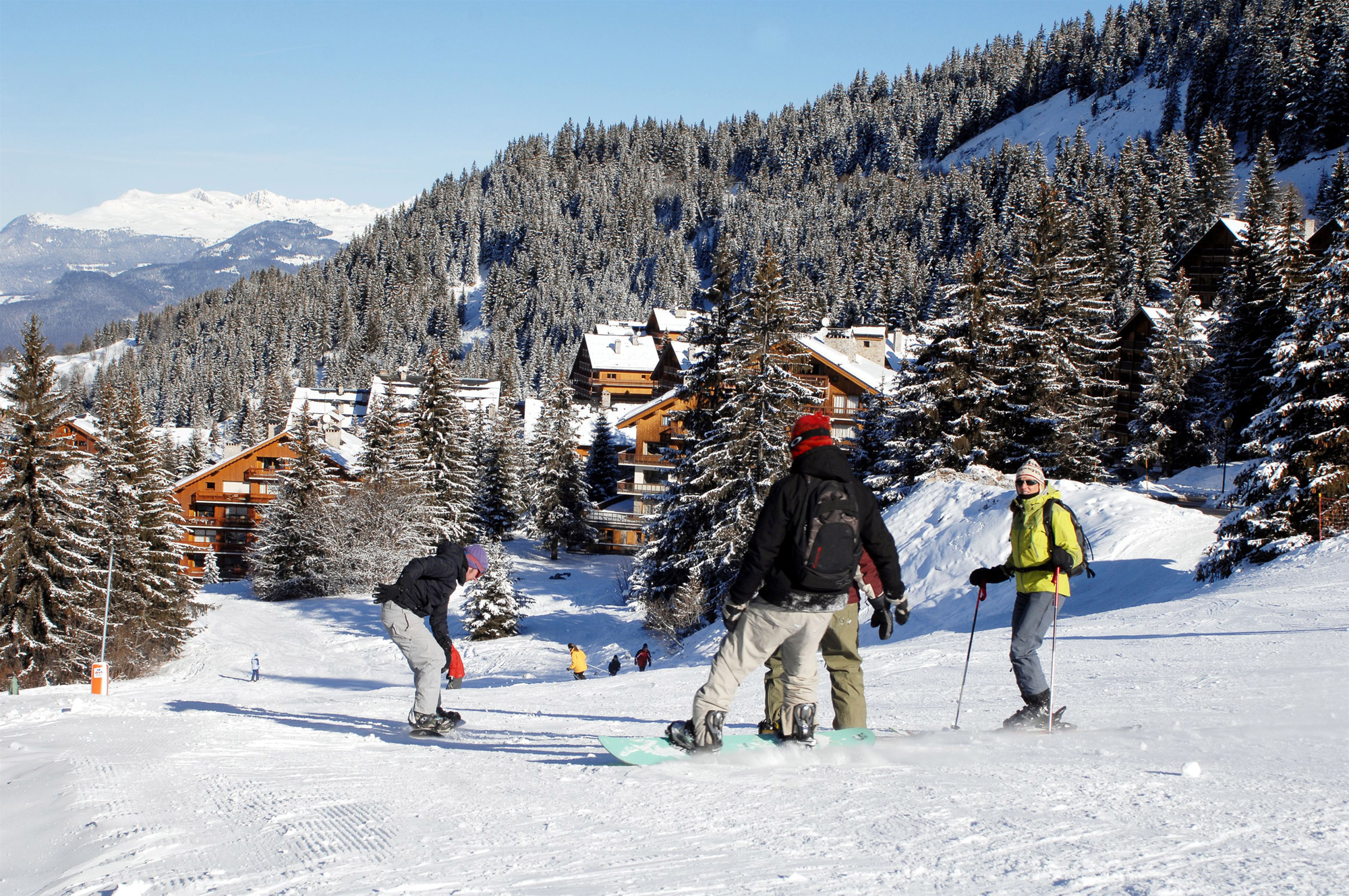
Ski-Specific Travel Insurance: Essential Protection
Standard travel insurance policies rarely cover winter sports, making ski-specific insurance an absolute must. Never assume “it won’t happen to me”; even minor accidents can lead to significant costs in the mountains.
Your policy should cover:
Mountain rescue and helicopter evacuation – costs can run into thousands without cover.
Medical treatment – on-mountain facilities are expensive and private.
Equipment damage or theft – ski gear is valuable and easily misplaced.
Piste closure compensation – weather conditions can impact your holiday.
Off-piste coverage – even if you intend to stick to marked runs, accidents can still occur.
If you plan to ski more than once per year, consider an annual multi-trip policy, which often provides better value than buying separate single-trip cover.

Additional Documentation to Add to Your Ski Checklist
Driving licence – if you intend to hire a car.
EHIC/GHIC card – for EU destinations (UK residents). Irish travellers should carry the European Health Insurance Card.
Booking confirmations – keep copies of flights, accommodation, transfers and ski school reservations.
Emergency contact information – store key numbers separately from your phone in case of loss or battery failure.

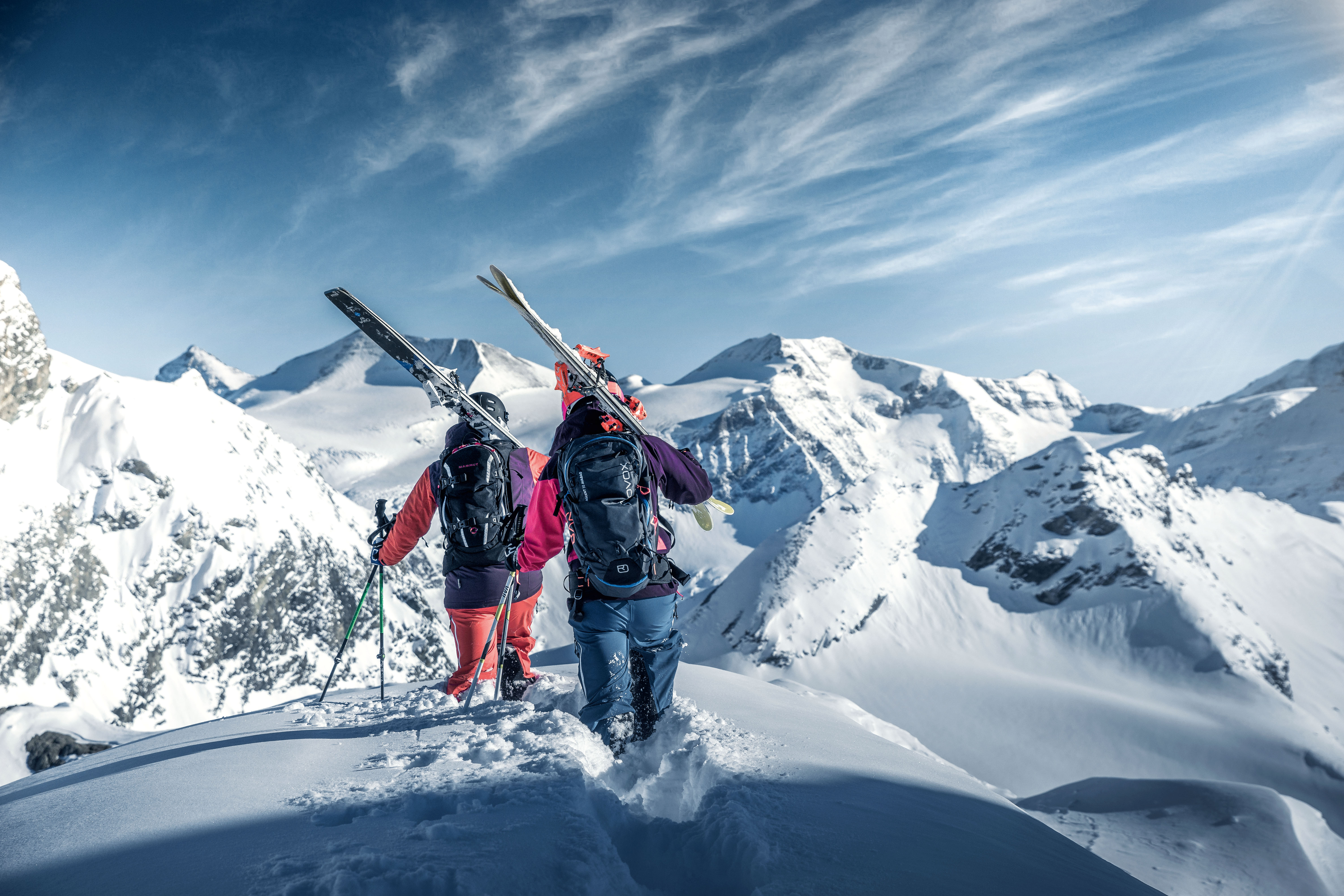
5. Ski clothing and gear checklist
Proper clothing and equipment form the most detailed section of any ski holiday checklist. Getting this right makes the difference between comfort and misery on the mountain.
The Three-Layer System
Mountain weather changes rapidly, making layering essential for comfort and safety.
Base Layer (Next to Skin):
Merino wool or synthetic thermal tops and bottoms
Never cotton – it retains moisture and loses insulation when wet
Moisture-wicking properties keep you dry and warm
Insulation Layer (Middle):
Fleece jacket or down/synthetic insulated jacket
Adjustable warmth that can be added or removed as conditions change
Should fit comfortably over base layer without restricting movement
Shell Layer (Outer Protection):
Waterproof, breathable ski jacket and salopettes (ski pants)
Wind and snow protection with ventilation options
Should accommodate all layers underneath comfortably
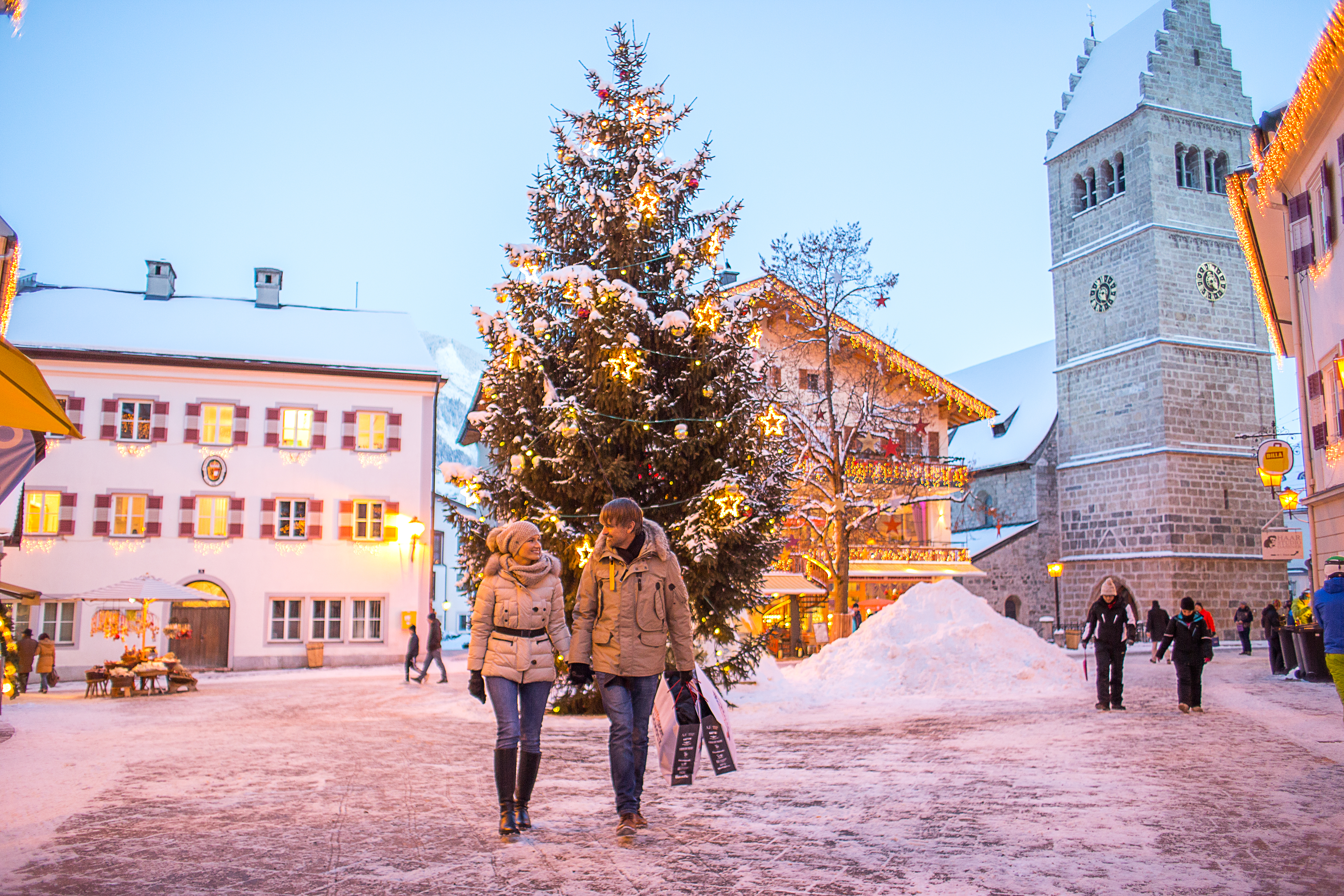
Complete Ski Clothing Checklist
Essential Clothing Items:
2-3 thermal base layer sets (tops and bottoms)
1-2 insulation layers (fleece or insulated jackets)
Waterproof ski jacket with powder skirt
Waterproof ski pants/salopettes with gaiters
3-4 pairs of ski socks (merino wool, avoid cotton)
Ski gloves or mittens (plus liner gloves)
Warm hat that fits under helmet
Neck gaiter or balaclava
Après-ski clothes for evenings
Essential Equipment:
Ski helmet (rental available but personal fit is better)
Ski goggles (multiple lens options for different conditions)
Sunglasses for bright days
Hand and foot warmers for extreme cold

Renting vs Buying Gear
First-Time Recommendation: Rent everything except clothing and personal items. This allows you to:
Try different equipment styles and brands
Avoid significant upfront investment
Skip the hassle of transporting equipment
Get properly fitted gear from professionals
Consider Purchasing: Helmet (for perfect fit and hygiene), ski socks, and base layers (personal comfort items).
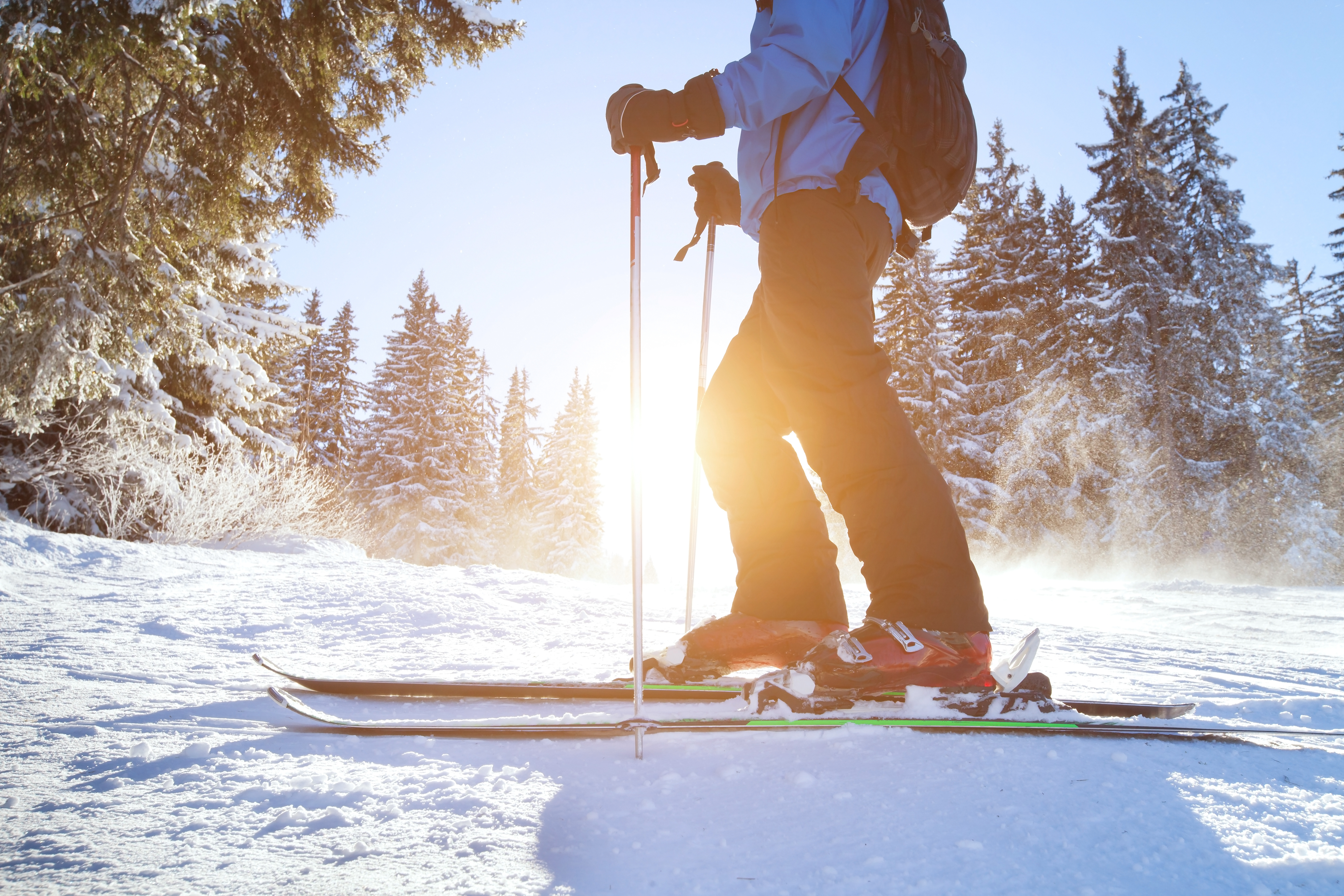
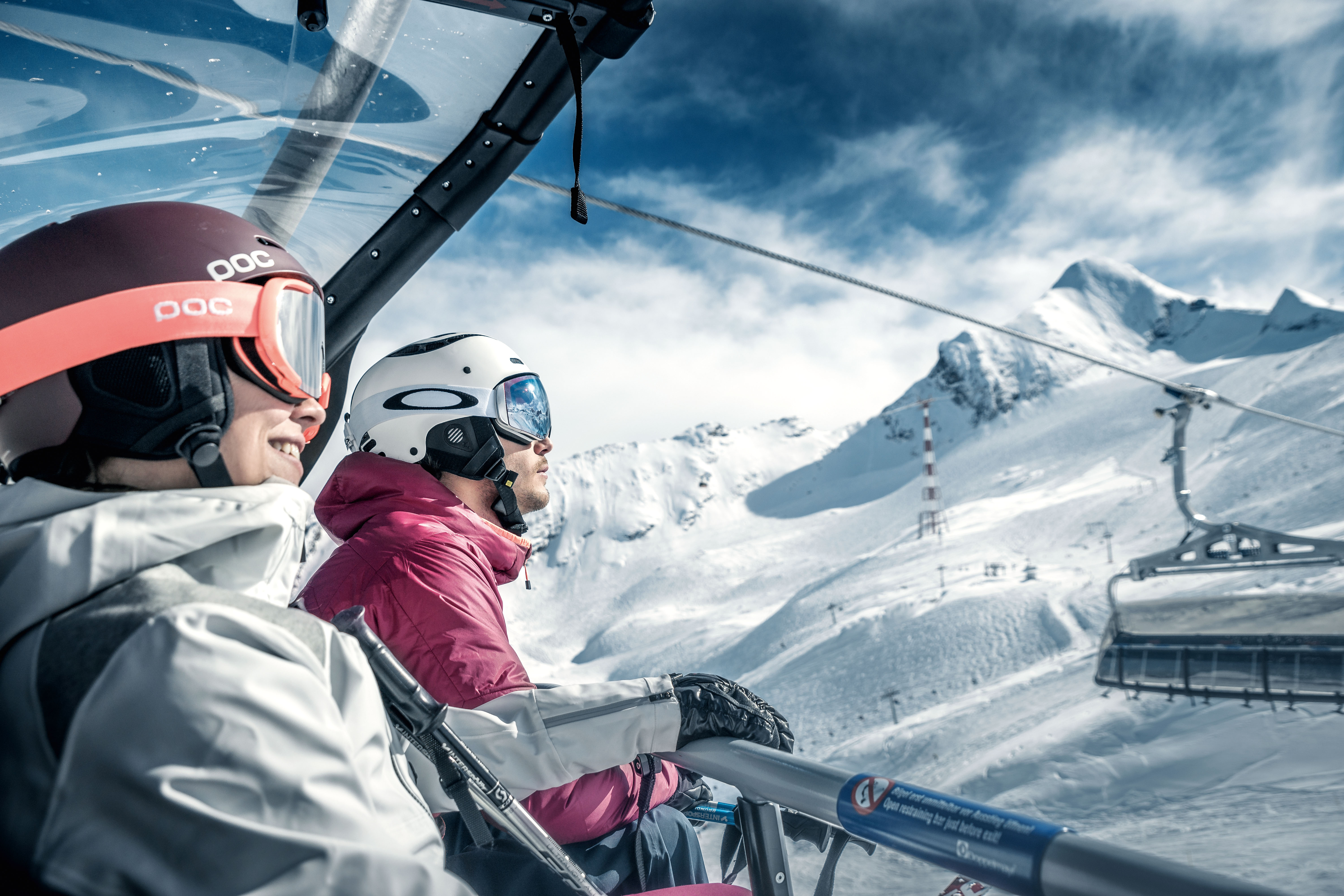
6. Lift passes, ski lessons, and ski hire
Why Pre-Booking Matters
Cost Savings: Pre-booking often provides discounts of 10-20% compared to resort prices.
Guaranteed Availability: Popular resorts and peak periods can sell out, especially for lessons.
Convenience: Arrive at your resort with everything organised and ready to go.
Ski Lessons: Essential for Beginners
Group Lessons offer the most cost-effective way to learn, providing: Professional instruction from certified instructors; Social interaction with other beginners; Structured progression through skill levels; Usually 2-6 people per group.
Private Lessons provide:Personalised instruction tailored to your learning style; Faster progression (typically); Flexible timing and focus areas; Ideal for nervous beginners or those with specific requirements.
Lesson Duration Recommendations: Minimum 3 days for basic competency; 5-6 days for comfortable parallel skiing; Consider intensive courses for faster progression.
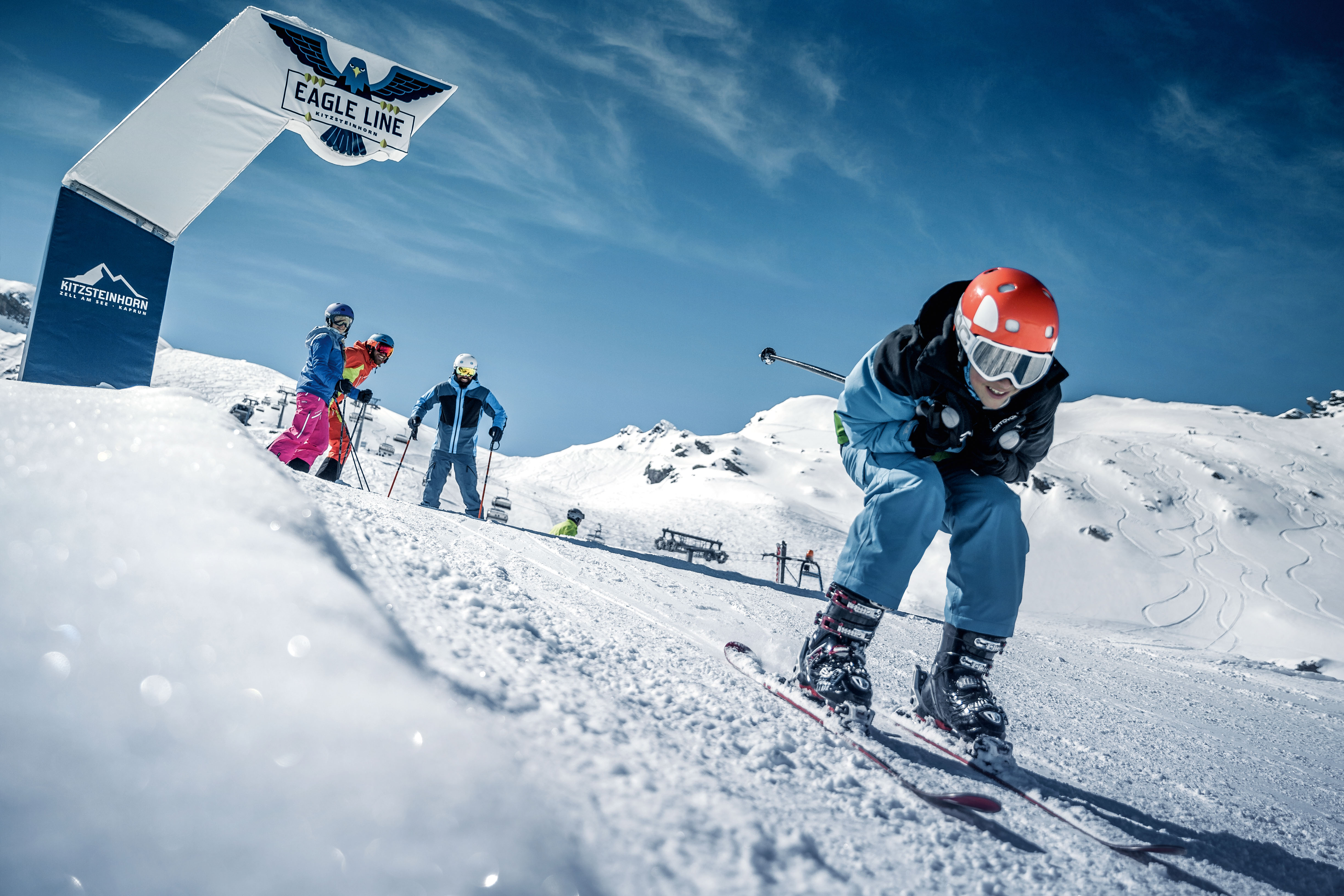
Equipment Hire Strategy
Ski and Boot Rental:
Book in advance for better equipment and prices
Ensure proper boot fitting – uncomfortable boots ruin ski holidays
Consider performance level: beginner, intermediate, advanced
Ask about equipment insurance for damage protection
What to Expect from Rental Shops:
Professional fitting service
Equipment adjustment and maintenance
Damage protection options
Upgrade possibilities if your skiing improves
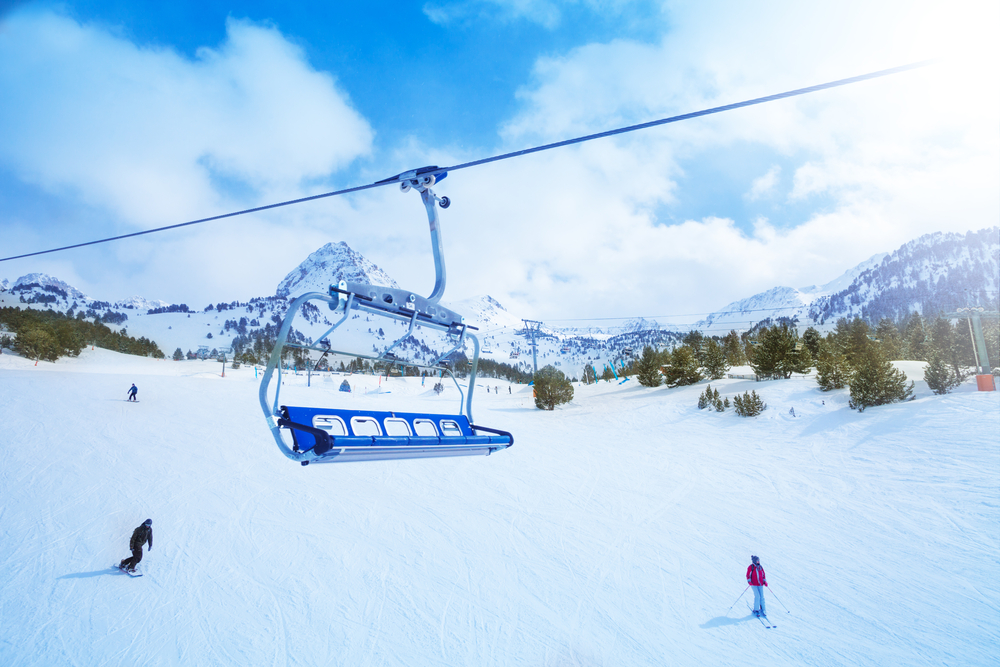
Lift Pass Options
Multi-Day Passes: Almost always better value than daily passes
Resort vs Area Passes: Larger ski areas offer more variety but cost more
Insurance Add-Ons: Some passes include insurance against bad weather
Age Discounts: Children, students, and seniors often receive significant discounts

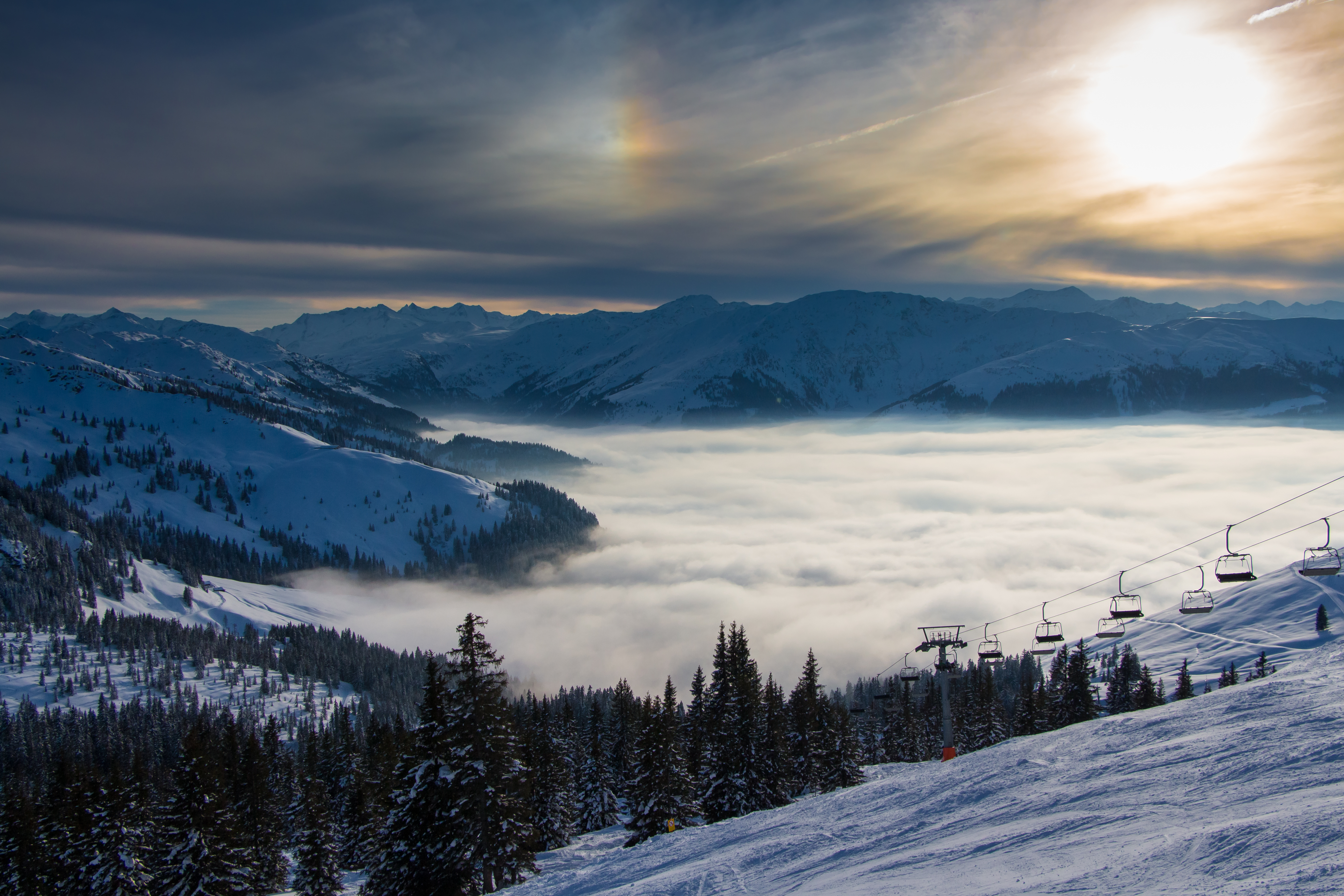
7. On-the-mountain essentials
Sun Protection:
High SPF sunscreen (30+ minimum): Mountain sun reflects off snow, increasing UV exposure
Lip balm with UV protection: Mountain air is dry and harsh on lips
Quality sunglasses: For flat light conditions when goggles aren't suitable
Hydration and Energy:
Insulated water bottle: Dehydration happens quickly at altitude
High-energy snacks: Nuts, energy bars, dried fruit for sustained energy
Emergency chocolate: Quick energy and morale booster

Navigation and Information:
Piste map: Physical backup for when phones die or lack signal
Resort app: Real-time lift status, weather, and snow conditions
Emergency contact numbers: Resort emergency services and your accommodation
Useful Technology:
Weather apps: Specific mountain weather forecasts
Ski tracking apps: Monitor your progress and routes
Resort-specific apps: Lift status, dining options, events
Translation apps: Helpful in non-English speaking resort
Action camera: Capture your progression and mountain scenery
Waterproof phone case: Protect against snow and moisture
Portable charger: Cold weather drains batteries quickly

Small Items, Big Impact
Pocket Tools:
Multi-tool with screwdriver: For equipment adjustments
Cable ties: Emergency binding or equipment repairs
Tissues and hand sanitiser: Basic hygiene on the mountain
Cash: Some mountain restaurants prefer cash payments


8. Après-ski and downtime
10. Après-ski and downtime
What is Après-Ski?
Après-ski (French for "after skiing") refers to the social activities and entertainment that follow a day on the slopes. It's an integral part of ski culture, ranging from quiet drinks with mountain views to lively parties with live music.
Types of Après-Ski:
Mountain bars: Located slope-side, perfect for end-of-day drinks with ski boots still on
Village bars and pubs: More relaxed atmosphere for conversation and local cuisine
Dance clubs: High-energy venues for those wanting to party after skiing
Cultural venues: Live music, traditional shows, or local entertainment
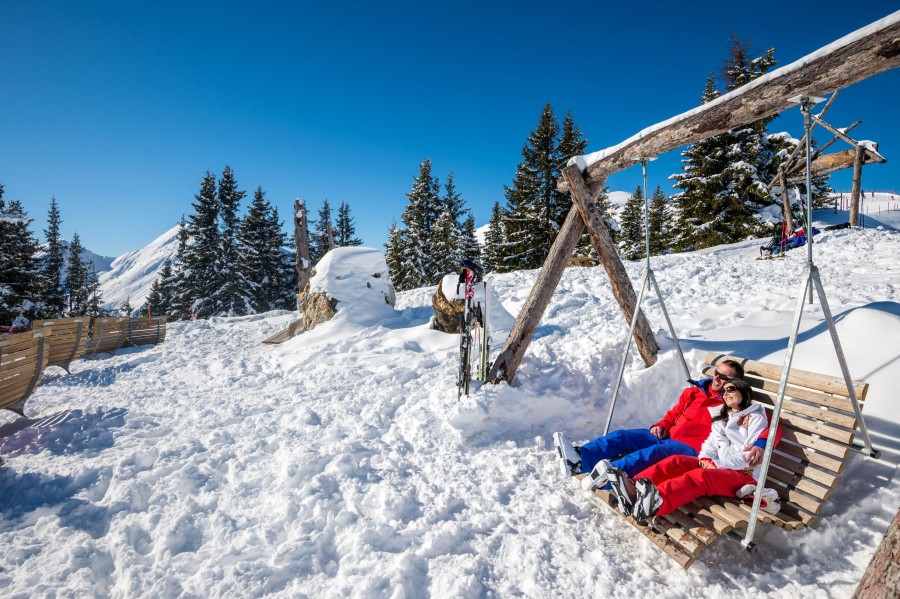
Activities Beyond Skiing
A complete first ski holiday checklist should include non-skiing activities for rest days or when the weather doesn't cooperate:
Relaxation Activities:
Spa and wellness centres: Many resorts have excellent facilities for muscle recovery
Swimming pools: Often heated and sometimes outdoor for unique mountain experiences
Massage services: Perfect for sore muscles after skiing
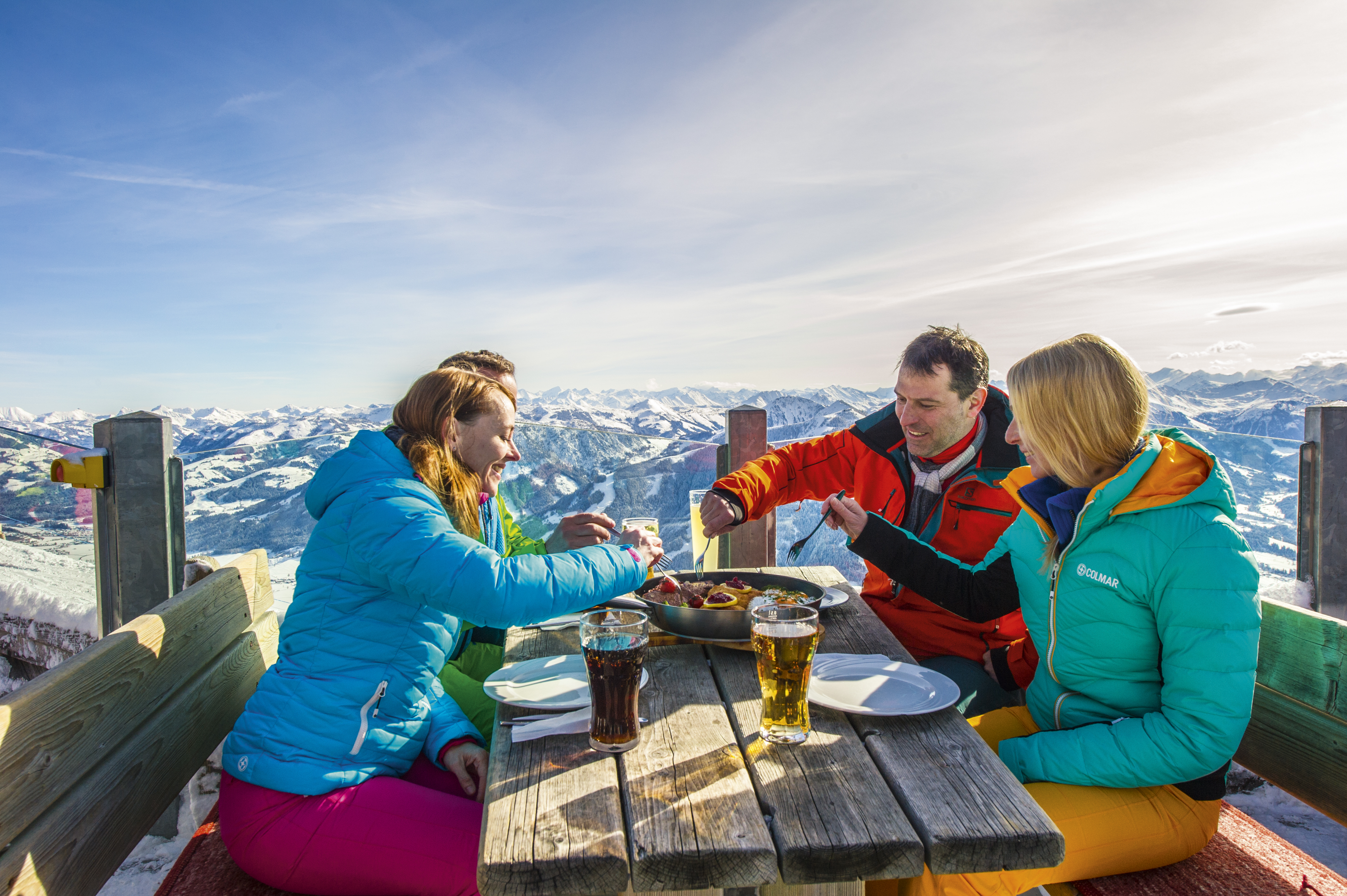
Active Alternatives:
Snowshoeing: Easier than skiing and great for exploring mountain terrain
Winter hiking: Marked trails with stunning mountain views
Tobogganing: Fun family activity available in most resorts
Ice skating: Many resorts have outdoor rinks with mountain backdrops
Cultural Experiences:
Local museums: Learn about mountain culture and history
Traditional restaurants: Experience authentic regional cuisine
Local markets: Shop for souvenirs and local products
Village walks: Explore resort architecture and mountain town life


9. How to save money on your ski trip
Money-Saving Strategies
Early booking discounts: 10-30% savings on accommodation
Package deals: Often better value than booking components separately
Group bookings: Discounts for larger parties
Loyalty programs: Repeat customer benefits from tour operators
Avoid school holidays: Prices can double during peak weeks
Consider January: Often excellent conditions with lower prices
Book Tuesday-Tuesday: Traditional changeover days offer better flight prices
Flexible dates: Use comparison sites to find the cheapest travel days
Supermarket shopping: Stock up on snacks and drinks
Happy hour specials: Many bars offer reduced prices
Lunchtime deals: Mountain restaurants often have set menus
Equipment care: Proper maintenance avoids replacement costs
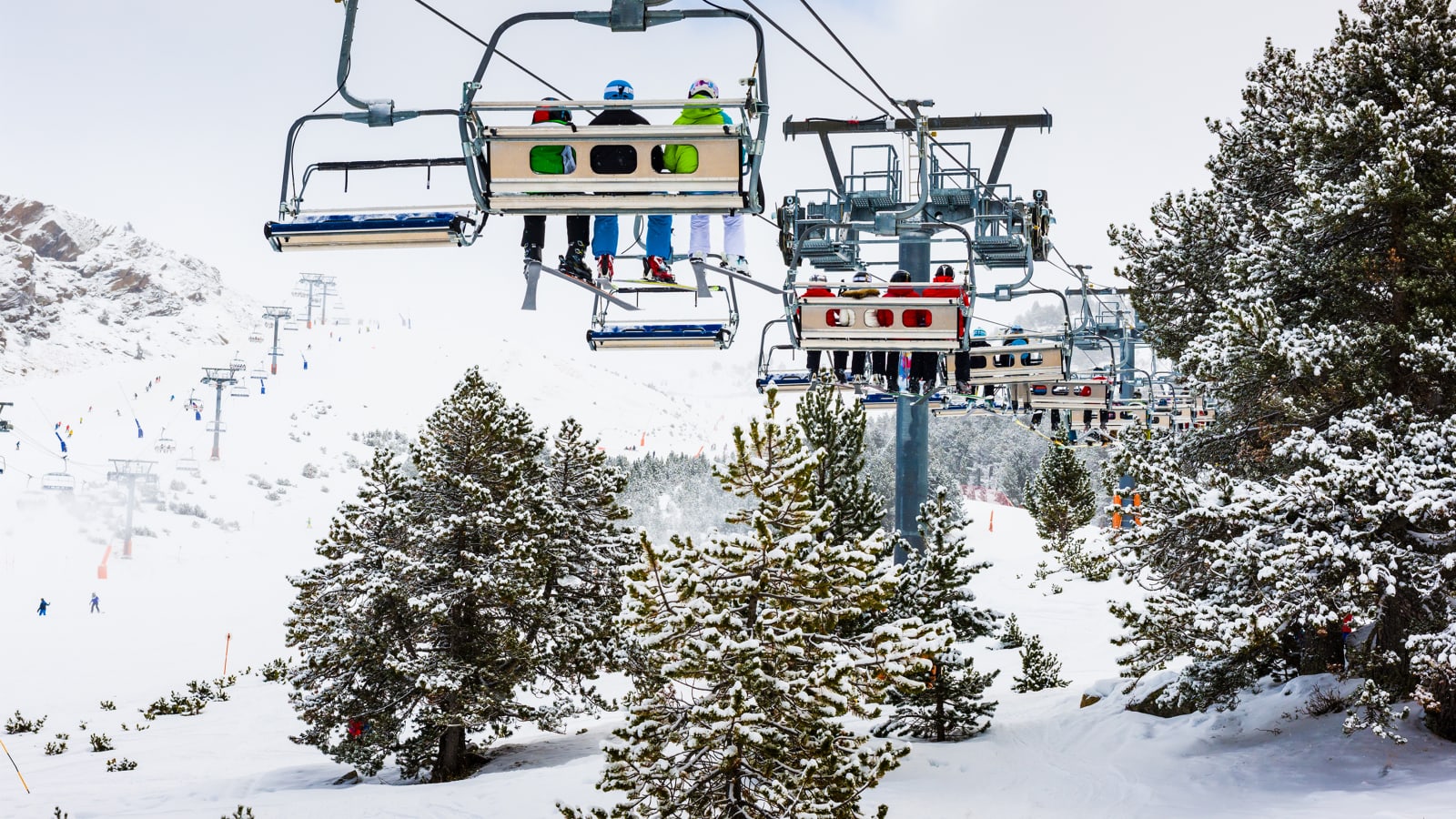
Sample Budget Ranges
Budget Ski Holiday (per person, 7 days):
Total: £600-900
Basic accommodation, self-catering, group lessons, economy flights
Mid-Range Ski Holiday (per person, 7 days):
Total: £1,000-1,500
3-star hotel half-board, some restaurant meals, group lessons, scheduled flights
Luxury Ski Holiday (per person, 7 days):
Total: £1,800-3,000+
4-5 star hotels, fine dining, private lessons, flexible flights, spa treatments

10. Safety and health considerations
Mountain safety is a non-negotiable part of your ski holiday checklist, ensuring you can enjoy your trip without unnecessary risks.
Ski Etiquette and Mountain Rules
Stick to marked runs: Don't venture off-piste without proper training and equipment
Follow colour-coded difficulty: Green (easiest), blue (easy), red (intermediate), black (advanced)
Take regular breaks: Fatigue leads to accidents
Listen to instructors: Professional guidance keeps you safe and progressing
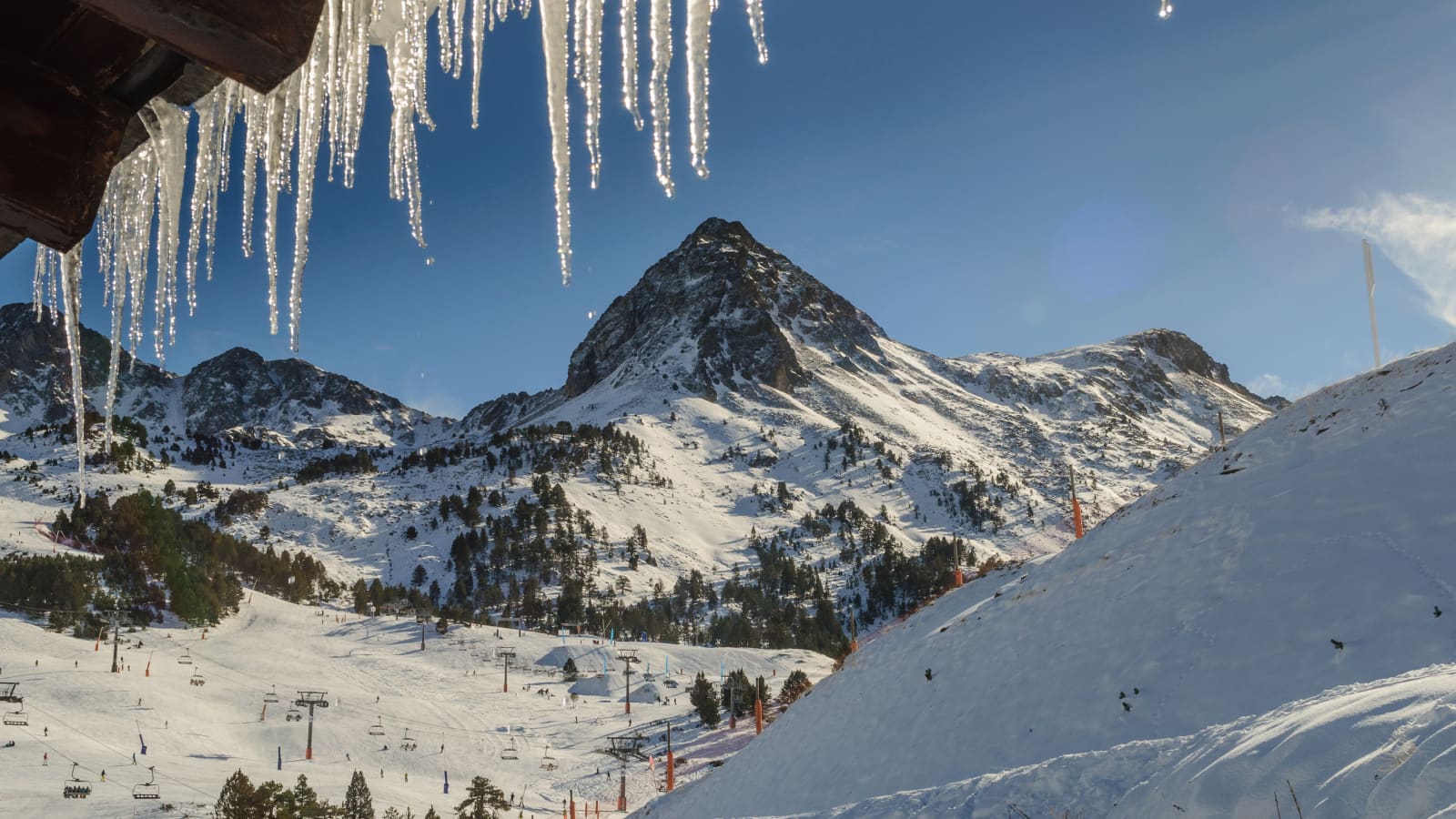

Weather Awareness:
Check daily conditions: Weather changes rapidly in mountains
Visibility matters: Don't ski in poor visibility conditions
Temperature monitoring: Dress appropriately for conditions
Storm procedures: Know how to respond to sudden weather changes
Physical Preparation:
Pre-trip fitness: Basic fitness reduces injury risk and improves enjoyment
Stretching routine: Daily stretching prevents muscle strain
Proper nutrition: Mountain activities require more energy
Rest importance: Adequate sleep aids recovery and alertness

Common Injury Prevention:
Warm up properly: Gentle skiing before challenging runs
Know your limits: Fatigue and overconfidence cause accidents
Proper equipment: Well-fitting boots and correctly adjusted bindings
Professional instruction: Proper technique reduces injury risk
Emergency Preparedness:
Emergency numbers: European emergency number is 112
Insurance details: Keep policy information accessible
Medical conditions: Carry information about any pre-existing conditions
Emergency contacts: Both home and resort emergency numbers

11. Frequently Asked Questions
What should I pack for my first ski holiday?
Your ski holiday checklist should include layered clothing (thermal base layers, insulating mid-layers, and waterproof outer shells), ski-specific accessories (helmet, goggles, gloves), and mountain essentials (sunscreen, lip balm, water bottle). Focus on moisture-wicking and insulating materials, avoiding cotton fabrics. Don't forget après-ski clothes for evenings and comfortable walking shoes for around the resort.

Do I need lessons if I've never skied before?
Absolutely! Ski lessons are essential for beginners and should be a priority on your first ski holiday checklist. Professional instruction ensures you learn proper technique from the start, significantly improving safety and enjoyment. Group lessons offer good value and social interaction, while private lessons provide personalized attention. Most beginners need 3-5 days of lessons to achieve basic competency and confidence on easy slopes.

What's the best age to start skiing?
There's no single "best" age to start skiing. Children can begin as early as 3-4 years old with specialized programs, while many adults successfully learn skiing in their 50s, 60s, and beyond. The key factors are physical fitness, confidence, and willingness to learn gradually. Adult beginners often progress faster due to better balance and instruction comprehension, while children typically have less fear and adapt more quickly to the mountain environment.
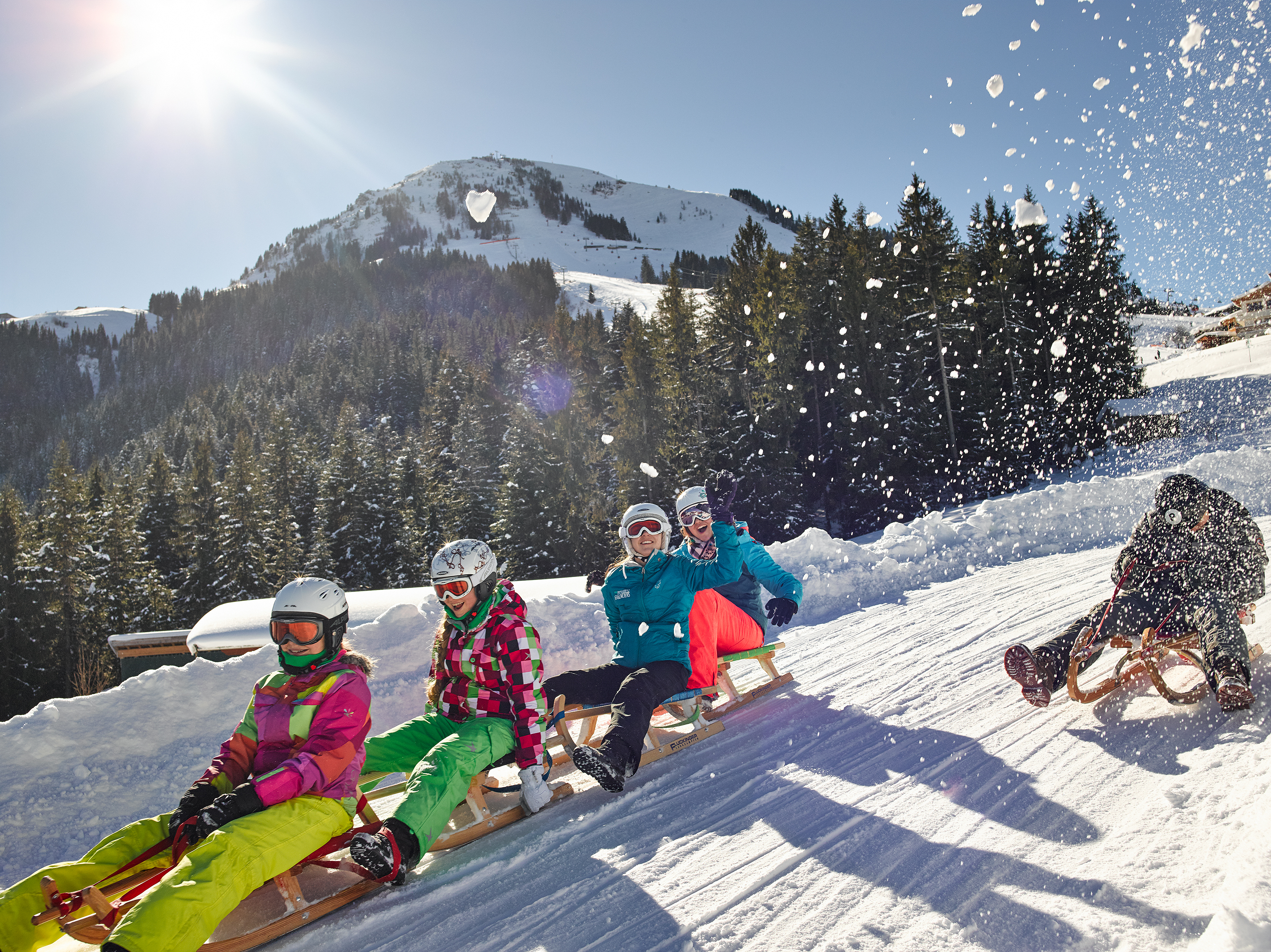
Should I rent or buy my ski gear?
For your first ski holiday, renting is almost always the better choice. Rental allows you to try different equipment types and brands, avoids significant upfront investment, and eliminates travel complications. Modern rental shops offer high-quality, well-maintained equipment with professional fitting services. Consider purchasing only personal items like helmets (for fit and hygiene), ski socks, and base layers. After several ski trips, you might consider buying equipment based on your preferences and skiing frequency.
Book your First Ski Trip with Topflight
Ready to plan your perfect first ski holiday? Use this comprehensive guide as your ski trip checklist to ensure nothing is forgotten. Remember, preparation is key to an unforgettable mountain adventure. Book with confidence and get ready to discover the magic of skiing!
At Topflight, we’re Specialists in creating unforgettable ski holidays for beginners and experts alike. Our experienced team helps you plan every detail of your mountain adventure, ensuring your first ski trip becomes the first of many.

40 Years Experience
Proudly serving Irish holidaymakers for over 40 years, delivering only the best quality & value to our clients.
100% Irish Owned
We are 100% Irish owned and proud of it. We truly understand what's important to Irish clients like no one else can.
Family Owned & Operated
Topflight is a family run company, and as a family, we know what it means to get the family holiday right first time.
Your Family, Protected
We take your trust in us very seriously. For your protection all of our package holidays are 100% protected.